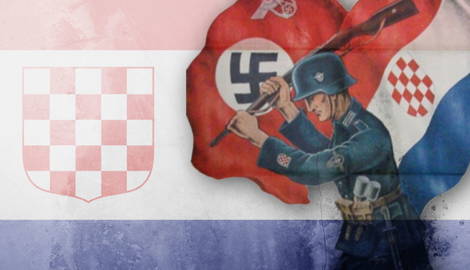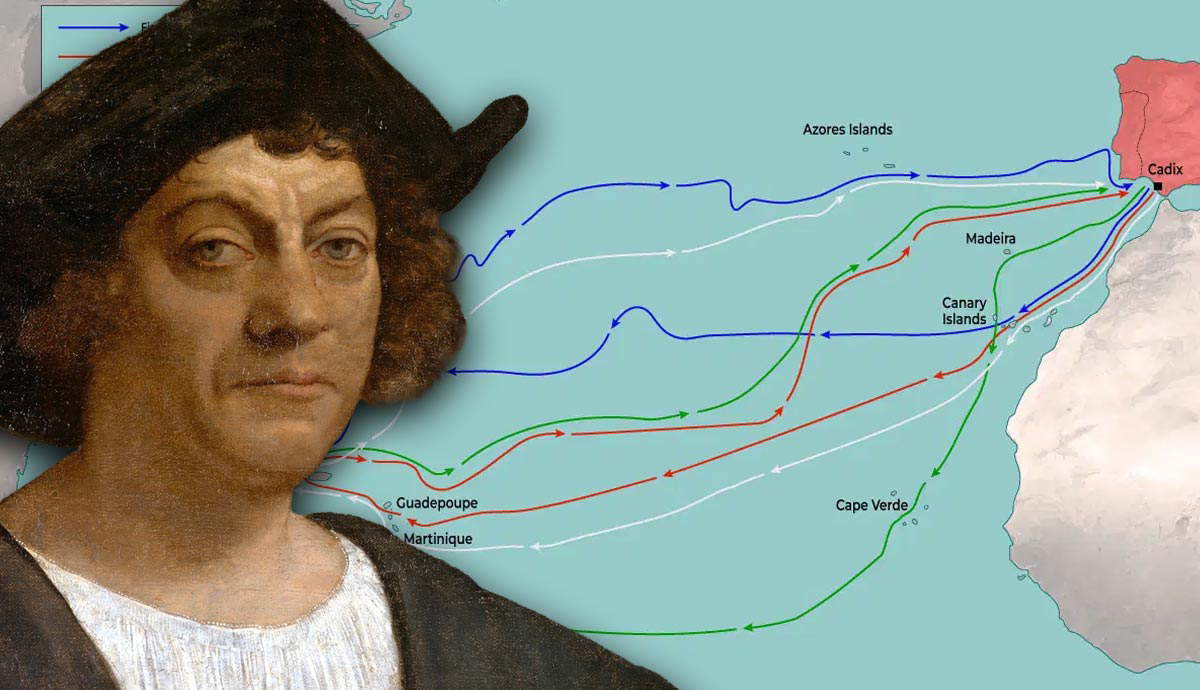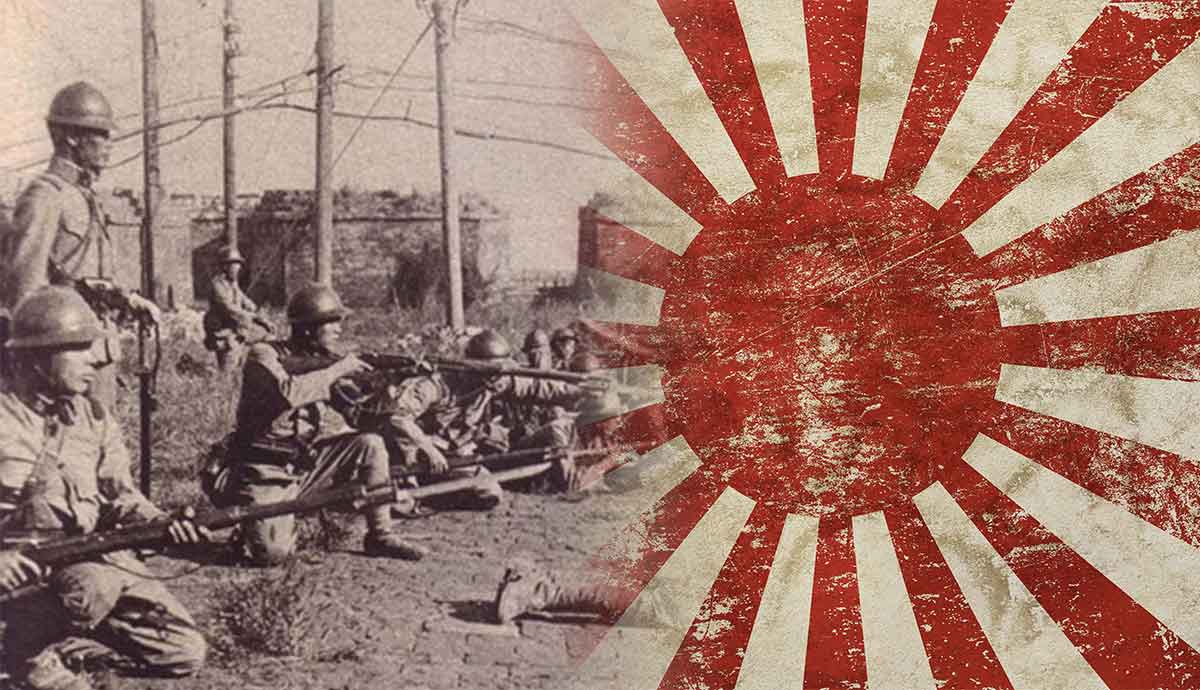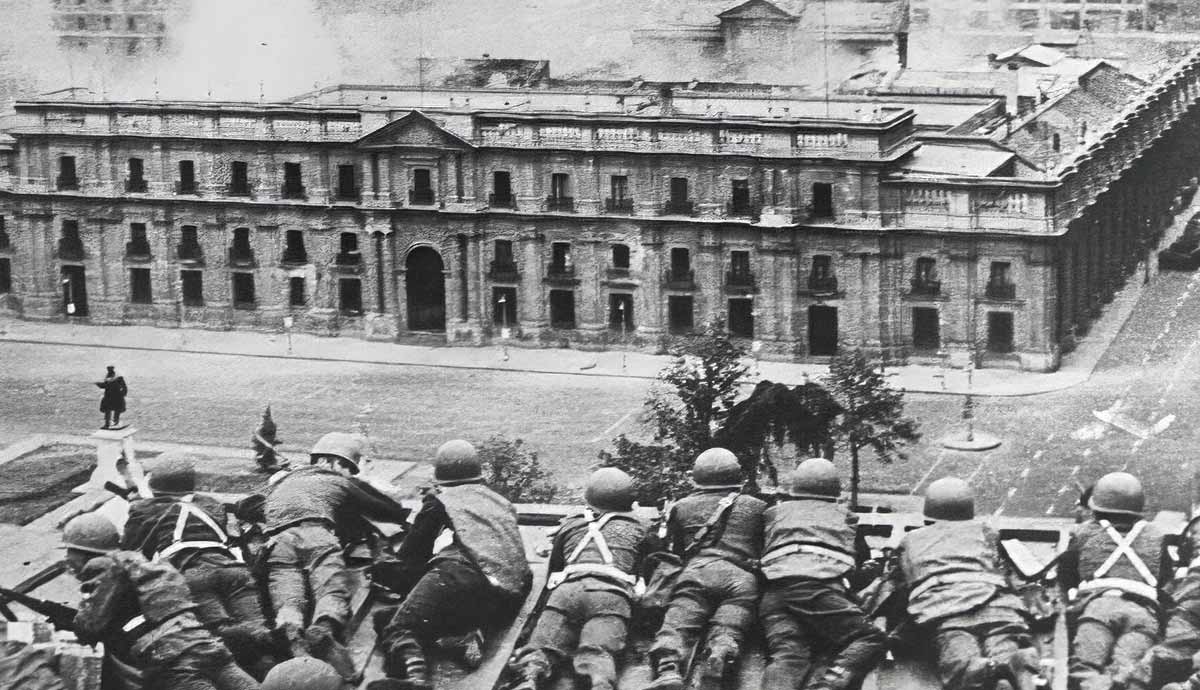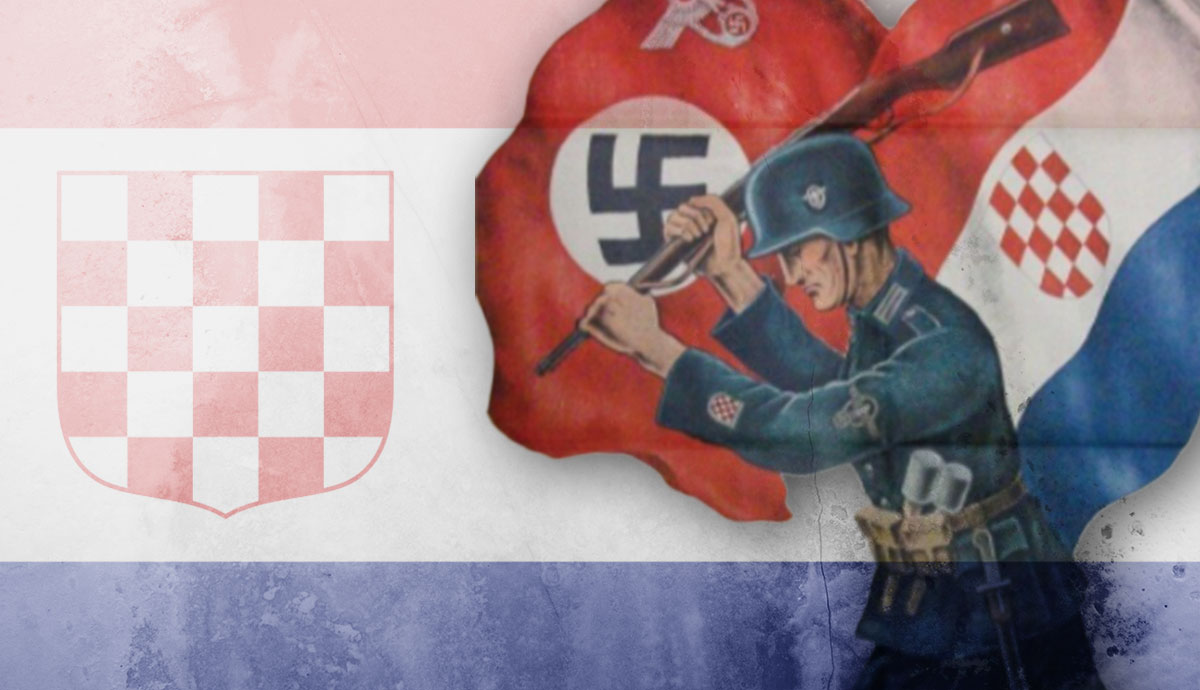
The Independent State of Croatia, founded in 1941, did not have the same impact on Europe’s demographics that Nazi Germany did. Nonetheless, the brutality of the genocidal campaign it conducted against its Serbs, Roma, and Jews is haunting. Its history and the memory thereof also contain lessons regarding the mechanics of genocide, terror, and commemoration.
Read on to discover the little-known “Independent State of Croatia” and its genocidal campaigns, starting with the localized form of fascist ideology adopted by it, the state’s implementation of genocide, in addition to some of the questions surrounding the memory of that genocide.
An Exercise in Contradiction: Fascism in Croatia’s Ideology

The proponents of fascism in Croatia harbored particular hatred for the Serbs, who they saw as traitors to the Catholic Church. This is one of the factors that sets Croatian fascism and the Ustasha, the fascist party, apart from other Axis ideologies, particularly German and Italian fascism. Additionally, the Ustasha’s leader and dictator of the “Independent State of Croatia,” Ante Pavelić, saw the Serbs’ existence within Croatia as a threat to Croat culture. He believed the Serbs were products of “Slav propaganda” and were engaged in an effort to “take over” Croatian society for centuries.
In defining the ideology for their genocide, the ministers of the Independent State (NDH) had to walk an especially thin tightrope. There was and still is no such thing as a pure Croat; Serbs, Bosniaks, Croats, Slovenes, Montegrins, Jews, and Roma had mixed and integrated for centuries. The only effective ways to define being a pure Croat were extreme Catholic fundamentalism and claiming that Croats descended from a Germanic people.
This vision of racial purity contained a bizarre contradiction; it included Bosniaks, who were Muslim because Pavelić believed they were merely Croats who converted to Islam under the Ottomans to preserve Croatian culture (Adriano, Cingolani, and Vargiu, 2018, p. 191).
The Ustasha recruited Croat Catholic priests to supervise conversions, arrests, and even massacres. With the NDH’s encouragement, priests who had lived alongside Jews, Roma, and Serbs for years turned on neighbors and friends.
Surely Some Revelation Is at Hand

On April 30, 1941, the NDH stripped all Orthodox Christians of citizenship, banned the use of the Cyrillic alphabet, shut down all Orthodox Christian institutions, and banned the term “Serbian Orthodox faith.” Anyone who could not prove “sufficient aryan Croat heritage” had to wear an armband.
The Ustasha state made its attitude toward Jews even clearer when its ministers announced Pavelić’s state intended to pursue a similar policy to Nazi Germany. The state required them to wear yellow discs with the Croatian ‘ž’ letter—which stood for židov, or Jew (McCormick, 72).
To terrorize Serbs, Jews, and Roma into conversion, Ustasha soldiers raided homes in Lika (Glenny, 486-9). These thugs emptied Serbian and Jewish homes at night, forcing families and people to arrange their affairs and belongings in mere minutes before dragging them away to extermination camps, the first of which, Koprivnica, opened in May 1941. By the end of May 1941, Koprivnica held 3,000 Serb Prisoners.
In June, Pavelić and Budak ordered the creation of three more camps – two on Pag island in Slana, a camp for men, and Metanja, a camp for women, and one in Jadovno, a mountain town in the Velebit range.
In August 1941, when Italian soldiers took over Pag, they found 791 bodies and an officer wrote in a report:
“upper and lower limbs were tied in the case of almost all male corpses. […] [L]ethal wounds to the chest, back, and neck produced by bladed weapons were verified on most corpses. The pits had been covered hastily with dirt and rocks, before all the victims had died, as proven by the tragic expressions on the faces of most corpses” (Adriano, Cingolani, and Vargiu, 192).
The Pag camps, however, were only a small ripple in a wave of violence compared to Jasenovac.
Jasenovac: The Symbol of an Ongoing Information War

The facts surrounding the Jasenovac concentration camp and its related genocide are intensely debated today, with Serbian politicians exaggerating the statistics or Croatian politicians, such as former president Franjo Tudjman himself, understating them. The problem with debunking claims on either side, however, is that few objective statistics exist to define a concrete number of state-sanctioned murder victims from 1941 to 1945.
Jasenovac opened in August 1941 and consisted of five camps on the border of Bosnia and Croatia. Jasenovac I and II shut down in November 1941 after the Ustasha executed all their Jewish, Serb, and Roma inmates because they lacked the extremist manpower to operate all five camps at once. Jasenovac III housed Balkan Jews, Roma, and Sinti before shipping them to extinction at Auschwitz. Jasenovac IV and V housed mostly Serb and Croat political dissidents.
Jasenovac initially occupied 60 square miles of territory. By 1945, it had expanded to 130 square miles, which is roughly the size of Atlanta or Las Vegas.
Wretched cattle cars full of hungry, tired Serb, Jewish, and Roma people made their way to Jasenovac in August 1941.

The prisoners arrived at a camp built to house 7,000 people, but it never reached that capacity because people died so quickly. If they made it past the gates, they found the stench of overflowing latrine pits, unwashed bodies, blood, and decay overwhelmed all prisoners who stepped off the cattle cars.
Occasionally, smoke’s scent came from the chimneys, and ashes landed on the dirt next to the rails and barracks. These ashes came from the camp crematorium, where the Ustasha thugs shoved living people into the furnace at a camp brick factory. Once processed and sentenced by the arbitrary and often bloodthirsty camp staff, one received a bowl and thin clothes; that is, if one was fit to work.
Food typically consisted of hot water flavored with cabbage leaves. Prisoners ate grass and leaves, and in some cases, the corpses of dead animals, desperately clinging to life through anything edible they could find. Guards forbade Serb prisoners from any drinkable water. They would have to drink from the Sava River, whose once-pristine teal waters contained latrine pit waste and decomposing bodies.

Work itself often killed prisoners, as construction, agriculture, brick, and blacksmith work often put these tired, weary people in dangerous situations with no safeguards. Prisoners burned to death, fell off buildings, or collapsed under the weight of heavy objects.
By October 1941, starvation began killing the prisoners. Day by day, they struggled to find food, some even descending to looking through feces in the latrine pits for undigested beans or cabbage leaves.
Barracks were not suitable for survival either. They were hastily constructed and had several gaps in their walls and roofs, gaps that water and snow seeped through in the winter. A long list of painful, long-suffering diseases—Typhoid, typhus, malaria, diphtheria, and even the flu—killed thousands of prisoners, whose bodies would be left to rot and worsen the conditions for the surviving prisoners.
There were eight barracks; prisoners lived in six of them. The last two were the “infirmary” and the “clinic.” If one were sent there, it likely meant no one would ever see them alive again.

Guards and staff at these two barracks would either wait for prisoners to die or, starting in 1942, take a group of dying inmates to the brick ovens, where people were cremated alive to make space for more prisoners.
This was not the only way the Ustasha cleared the way for more inmates in Jasenovac. In the nearby area of Gradina, the Ustasha fenced off a patch of land specifically for prisoner “liquidation.” The Ustasha rounded up Roma and Sinti prisoners and marched them to this killing field to massacre them.
After August 1942, seeing Nazi Germany’s zeal for executing Jewish people, the Ustasha decided they would begin sending Jews to Auschwitz. In just one year at the single camp of Jasenovac, the Ustasha had eliminated anywhere from 8,000 to 25,000 Jews, which at the time constituted about two-thirds of Croatia’s Jewish population. The remainder would be Nazi Germany’s undertaking. The Ustasha guards could then focus on “greater Croatia’s” Roma, Sinti, and most importantly, its Serbs.
They did so until April 1945. In the process, this camp likely murdered about 100,000 people: almost 50,000 Serbs, about 20,000 Roma and Scinti, 13,000 Jews, 4,000 Croats, and 1,000 Bosniaks.
The facts grow more disturbing looking closer at the demographics. Over 50,000 of these estimated 100,000 victims at this one concentration camp were women and children. During its operation, Jasenovac hosted over 50 mass graves, many of which were not even exhumed or discovered until decades later.
Aftermath

Across all of occupied “Greater Croatia,” a sum between 200,000 to half a million Serbs, Roma, Sinti, Jews, and political dissidents were murdered, over half of them being Serbs, recognized as the most populous target group in Ustasha territory. The genocide ended with the end of fascism in Croatia in the early summer of 1945. With communist partisans growing in strength, Pavelić devoted his Ustasha to two things: fighting the partisans and fleeing the Balkans.
A rat line was established at the Austrian border in the north with the help of priests who held Ustasha sympathies. Pavelić and other higher-ups fled to Austria and then to Rome. From there, many escaped to Argentina, escaping the punishment they had dealt to countless others.
As a new state, the Socialist Federal Republic of Yugoslavia rose from the ashes of the Ustasha. The people of Yugoslavia were traumatized and struggled to trust each other. Tito’s government, on the surface, allowed each ethnicity to assert its identity and speak its language. But the reality was more complex.

Monuments such as the memorial complex in Garavice, Bosnia-Herzegovina, are overgrown today and often prompt questions from the uninitiated as to their purpose. A plaque at this particular monument, with an excerpt from Ivan Goran Kovacic’s Jama, reveals its purpose: commemoration of massacres by the Independent State of Croatia.
Similar to Germany in the post-war period, monuments to victims were constructed. However, in Tito’s Yugoslavia, seldom was the Ustasha discussed in schools or institutions. Consequently, with the lack of a formal, positive effort to reconcile with history, some of the communities in the region inherited a wish to settle the score while others feared another genocide.
Thus, the Jasenovac concentration camp was often evoked by Serbs in the 1990s. When Croatia declared independence, even using the same coat of arms as the Ustasha on their flag, it prompted both frightened communities and communities wishing for revenge to take up arms against the new independent Croatian state—which demonstrates this genocide’s long-lasting tensions and historical effects.
References
Adriano, Pino, Giorgio Cingolani, and Riccardo James Vargiu. Nationalism and Terror : Ante Pavelic and Ustashe Terrorism from Fascism to the Cold War. Budapest: Central European University Press, 2018.
Council of Europe. “Factsheet on the Roma Genocide in Croatia.” Factsheet on the Roma Genocide. Council of Europe, n.d. https://www.coe.int/en/web/roma-genocide/croatia.
Glenny, Misha. The Balkans : Nationalism, War, and the Great Powers, 1804-1999. Toronto, Ontario: House of Anansi Press, 2012.
Jovan, Mirkovic. “OBJAVLJENI IZVORI I LITERATURA O JASENOVAČKIM LOGORIMA.” Jerusalim.org. Belgrade, Serbia: GrafoMark, 2000. https://web.archive.org/web/20100331232624if_/http:/www.jerusalim.org/cd/izvori/jmirkovic-izvori_2000.pdf.
Lukic, Dekan. “‘You Are Going to Lose This War.’” The Guardian, April 3, 1999, sec. World news. https://www.theguardian.com/world/1999/apr/03/3.
McCormick, Robert B. Croatia under Ante Pavelic. Bloomsbury Publishing, 2014.
Pejaković, Ivo , Vesna Teršelič, and Đino Đivanović. “Slana Concentration Camp 1941.” Documenta: Centre for Dealing with the Past. Documenta. Accessed February 29, 2024. https://documenta.hr/en/slana-concentration-camp-1941/.
Tanner, Marcus. Croatia : A Nation Forged in War. New Haven ; London: Yale Nota Bene, 2001.
Traynor, Ian. “Franjo Tudjman.” The Guardian, December 13, 1999, sec. News. https://www.theguardian.com/news/1999/dec/13/guardianobituaries.iantraynor.
United States Holocaust Memorial Museum. “Jasenovac.” Encyclopedia.ushmm.org. United States Holocaust Memorial Museum, n.d. https://encyclopedia.ushmm.org/content/en/article/jasenovac.
